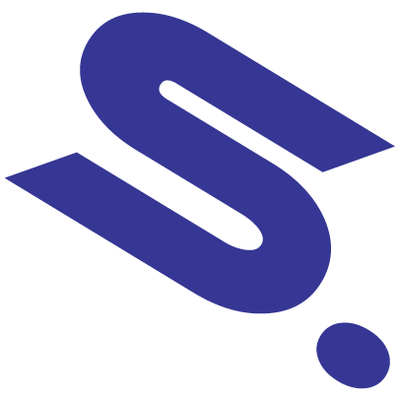Sponsored
- 23 Posts
- 7 Photos
- 0 Videos
- Male
- 01/08/2007
- Followed by 0 people
Recent Updates
- HL7 Integration: The Key to Seamless Healthcare Data ExchangeIn the complex world of healthcare, smooth data exchange between different systems is crucial for efficient patient care and improved outcomes. This is where HL7 integration comes in, acting as a universal language for medical data exchange. But what exactly is HL7 integration, and how can it benefit your healthcare organization? This article provides a comprehensive overview of HL7...0 Comments 0 Shares 222 Views 0 ReviewsPlease log in to like, share and comment!
- HL7 Integration: The Key to Seamless Healthcare Data ExchangeIn the complex world of healthcare, smooth data exchange between different systems is crucial for efficient patient care and improved outcomes. This is where HL7 integration comes in, acting as a universal language for medical data exchange. But what exactly is HL7 integration, and how can it benefit your healthcare organization? This article provides a comprehensive overview of HL7...0 Comments 0 Shares 206 Views 0 Reviews
- Inventory Management System FeaturesAn inventory management system (IMS) is a software solution that helps businesses track and manage their inventory levels. IMS systems can be used by businesses of all sizes, from small retailers to large manufacturers. IMS systems offer a variety of features, but some of the most common include: Centralized inventory management: IMS systems allow businesses to store and manage all of...0 Comments 0 Shares 780 Views 0 Reviews
- Unlocking the Future of Healthcare: Overcoming Interoperability Challenges
In the fast-paced world of healthcare, seamless data exchange and interoperability are vital for efficient and effective patient care. However, several challenges hinder the progress of healthcare interoperability. CodeIT, a renowned technology company, addresses these obstacles in their latest article titled "Challenges of Interoperability in Healthcare and How To Overcome Them." Discover the foremost EHR interoperability challenges and learn practical solutions to unlock the full potential of interoperability. Read more ... https://codeit.us/blog/challenges-of-interoperability-in-healthcareUnlocking the Future of Healthcare: Overcoming Interoperability Challenges In the fast-paced world of healthcare, seamless data exchange and interoperability are vital for efficient and effective patient care. However, several challenges hinder the progress of healthcare interoperability. CodeIT, a renowned technology company, addresses these obstacles in their latest article titled "Challenges of Interoperability in Healthcare and How To Overcome Them." Discover the foremost EHR interoperability challenges and learn practical solutions to unlock the full potential of interoperability. Read more ... https://codeit.us/blog/challenges-of-interoperability-in-healthcareCODEIT.USChallenges of Interoperability in Healthcare and How To Overcome ThemWhat challenges of healthcare interoperability can hold you back? Read about the foremost EHR interoperability challenges and how to solve them.0 Comments 0 Shares 205 Views 0 Reviews - 🚀 Hi, everyone! Today my post is for healthcare professionals and technology enthusiasts! 🏥
Are you curious about the magic behind seamless data exchange in healthcare systems? Have you heard of HL7 integration but aren't quite sure what it entails or how it revolutionizes the medical landscape? 🤔
Look no further! Our latest article, "What is HL7 Integration? — Six-step HL7 Interface Integration Instruction," holds the key to unlocking the mysteries of HL7 integration and understanding how HL7-driven systems work. 🌟
📚 Discover the Article https://codeit.us/blog/hl7-integration-guide
Dive into the world of HL7 integration and gain a comprehensive understanding of this groundbreaking technology. Unveil the fundamental concepts that drive efficient and secure data exchange in healthcare applications. Learn about the indispensable role of HL7 standards and how they facilitate seamless communication between medical systems. 💡
But that's not all! We have a treat for you—a detailed six-step guide to HL7 interface integration. 📝 This guide will equip you with the knowledge to effortlessly integrate HL7 interfaces into your healthcare systems, ensuring smooth data transmission and interoperability.
💥 Ready to unlock the power of HL7 integration? Click the link below to access the full article and embark on a journey to transform healthcare data exchange. 💥
Don't miss this opportunity to stay at the forefront of healthcare technology. Empower yourself with the knowledge to streamline data communication and enhance patient care through HL7 integration.
Join us on this enlightening journey today! 🌐🚀 Hi, everyone! Today my post is for healthcare professionals and technology enthusiasts! 🏥 Are you curious about the magic behind seamless data exchange in healthcare systems? Have you heard of HL7 integration but aren't quite sure what it entails or how it revolutionizes the medical landscape? 🤔 Look no further! Our latest article, "What is HL7 Integration? — Six-step HL7 Interface Integration Instruction," holds the key to unlocking the mysteries of HL7 integration and understanding how HL7-driven systems work. 🌟 📚 Discover the Article https://codeit.us/blog/hl7-integration-guide Dive into the world of HL7 integration and gain a comprehensive understanding of this groundbreaking technology. Unveil the fundamental concepts that drive efficient and secure data exchange in healthcare applications. Learn about the indispensable role of HL7 standards and how they facilitate seamless communication between medical systems. 💡 But that's not all! We have a treat for you—a detailed six-step guide to HL7 interface integration. 📝 This guide will equip you with the knowledge to effortlessly integrate HL7 interfaces into your healthcare systems, ensuring smooth data transmission and interoperability. 💥 Ready to unlock the power of HL7 integration? Click the link below to access the full article and embark on a journey to transform healthcare data exchange. 💥 Don't miss this opportunity to stay at the forefront of healthcare technology. Empower yourself with the knowledge to streamline data communication and enhance patient care through HL7 integration. Join us on this enlightening journey today! 🌐✨CODEIT.USWhat is HL7 Integration? — Six-step HL7 Interface Integration InstructionRead the article to discover what HL7 integration is and how HL7-driven systems work. Also, find a detailed six-step guide on HL7 interface integration.0 Comments 0 Shares 284 Views 0 Reviews - The Top 13 Data Analytics Trends to Watch Out For
Statista predicts that global data volume will reach 181 zettabytes by 2025, highlighting the exponential growth of data. In response, businesses are increasingly turning to data analytics to transform raw data into valuable insights. A recent article has outlined 13 top data analytics trends, with artificial intelligence and machine learning, synthetic data, and augmented analytics leading the way. Other trends include real-time data analytics, conversational analytics, and data-driven culture, highlighting the importance of data analytics in driving business efficiency and growth.
Businesses are facing an ever-increasing amount of data, and data analytics has become a crucial tool for turning this data into valuable insights. According to Statista, global data volume is expected to reach 181 zettabytes by 2025, highlighting the need for businesses to keep up with the exponential growth of data. A recent article has outlined the top 13 data analytics trends, including artificial intelligence and machine learning, synthetic data, and augmented analytics. These trends demonstrate the importance of data analytics in driving business efficiency and growth in today's data-driven world.
Learn more in our complete guide
https://codeit.us/blog/data-analytics-trendsThe Top 13 Data Analytics Trends to Watch Out For Statista predicts that global data volume will reach 181 zettabytes by 2025, highlighting the exponential growth of data. In response, businesses are increasingly turning to data analytics to transform raw data into valuable insights. A recent article has outlined 13 top data analytics trends, with artificial intelligence and machine learning, synthetic data, and augmented analytics leading the way. Other trends include real-time data analytics, conversational analytics, and data-driven culture, highlighting the importance of data analytics in driving business efficiency and growth. Businesses are facing an ever-increasing amount of data, and data analytics has become a crucial tool for turning this data into valuable insights. According to Statista, global data volume is expected to reach 181 zettabytes by 2025, highlighting the need for businesses to keep up with the exponential growth of data. A recent article has outlined the top 13 data analytics trends, including artificial intelligence and machine learning, synthetic data, and augmented analytics. These trends demonstrate the importance of data analytics in driving business efficiency and growth in today's data-driven world. Learn more in our complete guide https://codeit.us/blog/data-analytics-trendsCODEIT.USLatest Data Analytics Trends in 2023Review the latest data analytics trends and business intelligence technology applications in 2023.0 Comments 0 Shares 275 Views 0 Reviews - Healthcare organizations are facing difficulties when it comes to exchanging clinical data between various systems as they use diverse software systems. To facilitate data interoperability, Health Level Seven (HL7) was developed. HL7 is a set of rules and standards that help standardize clinical data for establishing information interchangeability. It enables healthcare systems to exchange data using messages formatted according to specific clinical data standards. Different software solutions can be connected using an integration engine that turns domain-specific data into HL7 messages. HL7 standards have many versions such as HL7 Version 2, HL7 Version 3, CDA, and FHIR. The newest standard, FHIR, supports different formats and can work with many applications. HL7 standards help medical organizations connect systems with different purposes and are built using distinctive technologies. Learn more in our complete guide https://codeit.us/blog/hl7-standardsHealthcare organizations are facing difficulties when it comes to exchanging clinical data between various systems as they use diverse software systems. To facilitate data interoperability, Health Level Seven (HL7) was developed. HL7 is a set of rules and standards that help standardize clinical data for establishing information interchangeability. It enables healthcare systems to exchange data using messages formatted according to specific clinical data standards. Different software solutions can be connected using an integration engine that turns domain-specific data into HL7 messages. HL7 standards have many versions such as HL7 Version 2, HL7 Version 3, CDA, and FHIR. The newest standard, FHIR, supports different formats and can work with many applications. HL7 standards help medical organizations connect systems with different purposes and are built using distinctive technologies. Learn more in our complete guide https://codeit.us/blog/hl7-standardsCODEIT.USWhat are HL7 EMR Standards? — How HL7 Standards WorkDo you want to know how to know HL7 standards work? Check out the HL7 EHR overview, types of HL7 messages, and data interoperability use cases in healthcare.0 Comments 0 Shares 227 Views 0 Reviews
- 0 Comments 0 Shares 148 Views 0 Reviews
- Cloud-driven applications allow developers to create mobile applications that are synchronized with desktop or web applications, using a Cloud-based backend. This creates a comprehensive environment for users on different platforms. CodeIT, a software development company, has released a guide for building cloud-driven mobile applications. https://www.businessofapps.com/insights/how-to-build-scalable-and-secure-cloud-based-mobile-applications/
The guide offers detailed app-building instructions, including defining project requirements, selecting a type of mobile application, selecting a Cloud provider, creating UI/UX design, developing an app's architecture and requirements, hiring and onboarding developers, and creating an MVP. The guide also offers insights into the peculiarities of cloud-driven mobile applications, such as data synchronization, high scalability, and internet connection reliance. The Cloud-based applications development market is expected to reach $168 billion by 2025, according to a report by Statista. Popular examples of Cloud-driven mobile apps include Dropbox, Asana, and Google Drive.Cloud-driven applications allow developers to create mobile applications that are synchronized with desktop or web applications, using a Cloud-based backend. This creates a comprehensive environment for users on different platforms. CodeIT, a software development company, has released a guide for building cloud-driven mobile applications. https://www.businessofapps.com/insights/how-to-build-scalable-and-secure-cloud-based-mobile-applications/ The guide offers detailed app-building instructions, including defining project requirements, selecting a type of mobile application, selecting a Cloud provider, creating UI/UX design, developing an app's architecture and requirements, hiring and onboarding developers, and creating an MVP. The guide also offers insights into the peculiarities of cloud-driven mobile applications, such as data synchronization, high scalability, and internet connection reliance. The Cloud-based applications development market is expected to reach $168 billion by 2025, according to a report by Statista. Popular examples of Cloud-driven mobile apps include Dropbox, Asana, and Google Drive.WWW.BUSINESSOFAPPS.COMHow to build scalable and secure Cloud-based mobile applicationsA Cloud-driven application is a type of mobile app that is connected to remote servers to fetch and send data, process information, etc. The technology enables developers to build mobile applications synchronized with desktop or web apps, creating a comprehensive environment for users on different platforms. In the post below, you will look deeper into Cloud application development and find detailed app-building instructions. What is Cloud development? Cloud-based applications development refers to building mobile applications with a Cloud-based backend. They use the Internet to fetch data from remote servers and use the computing power of dedicated computers. Developing Cloud-native applications requires software engineers to pick, connect, and configure a dedicated server when creating a new app. Key peculiarities of a Cloud-driven mobile app Cloud application0 Comments 0 Shares 563 Views 0 Reviews - With the stock market becoming increasingly complex and volatile, investors are turning to technology to gain an edge. Machine learning has emerged as a powerful tool for predicting stock prices by training algorithms to identify patterns in data. By analyzing historical data, machine learning algorithms can identify patterns and trends that may indicate future price movements.
The article delves into the specific techniques used in machine learning for stock prediction, including supervised and unsupervised learning, regression analysis, and neural networks. It also discusses the advantages and limitations of these techniques and provides examples of successful implementations.
"Machine learning is revolutionizing the way we approach stock market analysis," said Aleksey Kholodenko, CEO of CodeIT. "With its ability to identify patterns and trends that may not be immediately apparent to humans, machine learning has the potential to unlock new opportunities and drive better investment outcomes."
To read the full article and learn more about machine learning for stock prediction, please visit https://codeit.us/blog/machine-learning-for-stock-prediction
#ML
#MachineLearning
#stockprediction
#MLprediction
With the stock market becoming increasingly complex and volatile, investors are turning to technology to gain an edge. Machine learning has emerged as a powerful tool for predicting stock prices by training algorithms to identify patterns in data. By analyzing historical data, machine learning algorithms can identify patterns and trends that may indicate future price movements. The article delves into the specific techniques used in machine learning for stock prediction, including supervised and unsupervised learning, regression analysis, and neural networks. It also discusses the advantages and limitations of these techniques and provides examples of successful implementations. "Machine learning is revolutionizing the way we approach stock market analysis," said Aleksey Kholodenko, CEO of CodeIT. "With its ability to identify patterns and trends that may not be immediately apparent to humans, machine learning has the potential to unlock new opportunities and drive better investment outcomes." To read the full article and learn more about machine learning for stock prediction, please visit https://codeit.us/blog/machine-learning-for-stock-prediction #ML #MachineLearning #stockprediction #MLpredictionCODEIT.USMaster Guide on Machine Learning for Stock Prediction ImplementationDo you want to start using machine learning for stock prediction but don’t know where to start? Explore the thoroughgoing guide on ML-driving forecasting.0 Comments 0 Shares 431 Views 0 Reviews
More Stories














